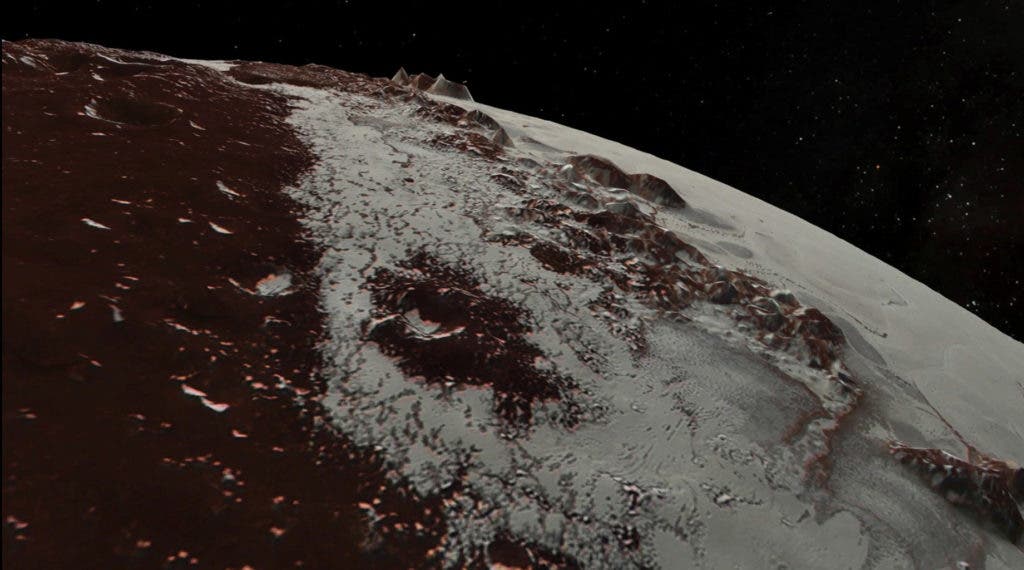This might also mean that there are many more oceans in the universe than previously thought.

Digital rendering, with exaggerated relief and color of Pluto. Based on close-up images taken by NASA’s New Horizons spacecraft in 2015. Credits NASA/Johns Hopkins University Applied Physics Laboratory.
It’s almost shocking to think how much we know about Pluto. The tiny ex-ex-planet was studied in unprecedented detail by the New Horizons missions that brushed right by it. The images sent by the shuttled showed Pluto’s topography in great detail, revealing some unexpected details. For instance, scientists were surprised by a white-colored ellipsoidal basin named Sputnik Planitia, located near the equator and roughly the size of Texas. The basin appears to be very thin, which would suggest the presence of a subsurface ocean beneath it. However, if this was true, researchers would have expected it to be long-frozen by now, which does not seem to be the case.
Now, researchers believe that they have an idea what happened.
Shunichi Kamata and colleagues from several Japanese universities propose that an “insulating layer” of gas hydrates exists beneath the icy surface of Sputnik Planitia. Gas hydrates are a crystalline solid formed from water and gas. They look and behave very much like ice, but contain high amounts of methane gas. They also have very low thermal conductivity, which means that they can essentially act as an insulator.
Since actually going to Pluto and drilling it on-site is not really an option, researchers tested their hypothesis with computer simulations. They generated a model of Pluto and its subsurface ice starting 4.6 billion years ago, when the solar system began to form.
The simulations confirmed that without an insulator, the subsurface ice would have long frozen over.
It also showed that the thermal and structural evolution of Pluto’s interior and the time required for a subsurface ocean to freeze and for the icy shell covering it to become uniformly thick. They simulated two scenarios: one where an insulating layer of gas hydrates existed between the ocean and the icy shell, and one where it did not.
The study has been published in Nature Geoscience. DOI: 10.1038/s41561-019-0369-8









